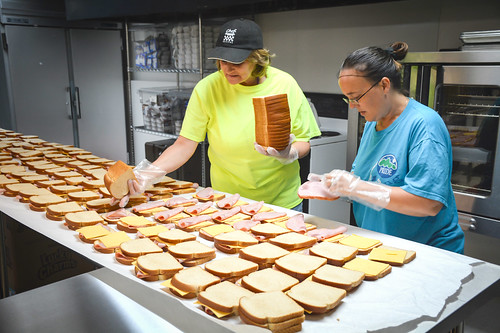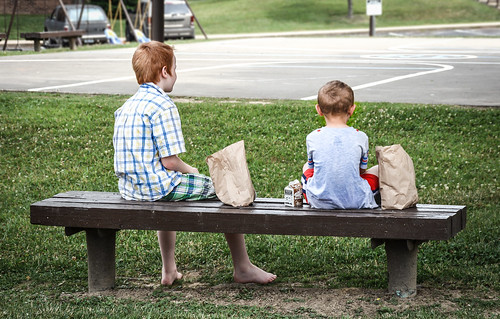
Kids in bright summer play clothes come running with smiles and laughter as the white cargo van rolls to a stop near a playground and the rear doors swing open. No, it’s not the ice cream truck. It is something better – the lunch ladies from Kentucky Communities Economic Opportunity Council (KCEOC) Community Action Center delivering bagged lunches filled with fruit, sandwiches, juice and milk.
Volunteers and staff at KCEOC work hard to feed as many Eastern Kentucky kids as possible during the summer in three USDA StrikeForce counties: Knox, Whitley and Laurel.
The Summer Food Service Program, like the National School Lunch Program, is made possible through funding by USDA Food and Nutrition Service and the work of state and local partners. KCEOC, headquartered in Gray, Ky., benefits from the ongoing commitment of a small group of dedicated staff and caring volunteers who feed up to 1,800 children a day in the three-county region. Their mission requires a lot of planning, coordination. Success also depends upon an assembly line for sandwiches and packing to ensure enough meals are prepared and delivered to dozens of feeding sites on multiple routes through the mountainous region.
KCEOC director Brenda Moses arrives bright and early each morning to lead the day’s activities, fielding calls from each site confirming the number of children they expect to feed that day. With so many moving parts and a tight daily deadline, this endeavor is as choreographed as a school play. Everyone involved performs their assigned role with dedication, working efficiently to prepare, sort and pack the deliveries for each stop before the delivery teams head out the door on time.
A new mobile unit, made possible by $46,000 in USDA Economic Impact Initiative Grant funds matched by KCEOC, will be a game changer. The mobile unit will make it easier for KCEOC to deliver individual meals to youth throughout the three-county service area. The grant is also making it possible for KCEOC to expand an emergency family homeless shelter.
Helping local partners ensure children have seamless access to meals year round is one of many ways USDA works to address rural child poverty. In March, Agriculture Secretary Tom Vilsack and Kentucky Governor Steve Beshear announced the creation of the Rural Child Poverty Nutrition Center (RCPNC), a USDA partnership with the University of Kentucky focused on families with children living in persistently poor counties in 15 states. The new Center has already announced funding availability for projects that use creative strategies to increase coordination among federal, state and local nutrition programs and related service.
In a state like Kentucky, where more than 26 percent of children live in poverty, summer meal sites provide a key safety net so children don’t have to go hungry while school is out.




